Resources
About Us
Pharmaceutical Automation Market Size, Share, Forecast, & Trends Analysis by Offering (Solutions and Services), Mode of Automation (Semi-automatic Systems and Fully automatic Systems), End User (Pharmaceutical Industry and Biotech Industry), & Geography - Global Forecast to 2031
Report ID: MRSE - 104594 Pages: 320 Aug-2024 Formats*: PDF Category: Semiconductor and Electronics Delivery: 2 to 4 Hours Download Free Sample ReportThe growth of the pharmaceutical automation market is driven by the increasing adoption of robots in pharmaceutical manufacturing, government initiatives to promote industrial automation, and the rising demand for energy-efficient systems. Furthermore, the rising demand for IIoT in pharmaceutical manufacturing is expected to generate growth opportunities for market stakeholders.
In the pharmaceutical industry, robots are used for various tasks throughout the manufacturing process. Robotic solutions optimize production speed and quality, ensuring that the pharmaceutical products meet stringent standards. Pharmaceutical robots execute repetitive tasks in cleanroom environments, reducing concerns about contamination risks. The integration of robotics in pharmaceutical manufacturing offers several benefits, contributing to the growth of the pharmaceutical sector.
With the growing demand for new drugs and medicines, pharmaceutical companies are focused on increasing productivity. As a result, they are increasingly relying on automated equipment and robotics. These companies are expected to deliver quality products and cater to the growing global demand for medicines, which necessitates improved operating procedures and enhanced production speed.
Click here to: Get Free Sample Pages of this Report
Several pharmaceutical manufacturers have started deploying robots in their manufacturing operations to enhance productivity. For instance, in September 2022, Sinocare (China), Asia’s largest blood glucose meters manufacturer, partnered with HAI ROBOTICS to introduce a complete set of Autonomous Case-handling Robot (ACR) Systems in its warehouse in Changsha, China. This partnership promoted deeper integration and development of in-plant logistics in the healthcare industry, delivering higher efficiency and reducing labor costs through ACR systems and whole-process digitalized management. Together with HAI ROBOTICS, Sinocare aimed to build a warehousing system for semi-finished products to unlock higher potential in healthcare warehousing.
Furthermore, several robot manufacturers offer products for pharmaceutical manufacturing to enable automated business processes. For instance, Kassow Robots (Denmark) provides pharmaceutical manufacturers with a wide range of high-performance offerings for all types of pharmaceutical tasks. The company’s robots are reliable and precise, allowing manufacturers to maximize output in labor-intensive tasks 24/7 while minimizing costs. Thus, the increasing adoption of robots to streamline and optimize various aspects of pharmaceutical manufacturing is driving the growth of this market.
Major economies across the globe are implementing Industry 4.0 technologies, including IoT, artificial intelligence, robotics, cloud, and analytics, to transition to smart manufacturing. Therefore, governments worldwide are encouraging the adoption of disruptive technologies, including industrial automation. Tax benefits, R&D investments, and the development of promotional ventures & platforms are some of the initiatives undertaken by governments worldwide to promote the adoption of industrial IoT technology.
The Japanese government is investing in the Society 5.0 initiative to create a society that integrates digital technology and human capabilities. The initiative envisions the seamless integration of various technologies into everyday life, including AI, IoT, robotics, autonomous systems, and advanced data analytics. These technologies are being adopted in various sectors, including healthcare, transportation, education, and manufacturing.
Furthermore, in January 2021, the European Commission launched the Horizon2020 framework, comprising 24 new robotics projects. The framework covered various research and innovation topics — from manufacturing, commercial, and healthcare use to consumer, transportation, and agri-food robotics. In addition, Poland is becoming a major manufacturing power in Europe due to the demand for new and innovative manufacturing technologies. The Polish government has announced incentives for advanced manufacturing and industrial transformation and also provides grants to support industry research. Such initiatives are supporting the adoption of automation technologies across industries, driving the growth of the pharmaceutical automation market.
The scope of IIoT is vast and can be applied across different stages of the pharmaceutical value chain. IIoT serves applications in the pharmaceutical industry ranging from research, drug discovery, and the manufacturing supply chain to sales, marketing, and the patient experience. Pharmaceutical manufacturing faces several pressures, such as supply chain disruption, quality control issues, and increased regulatory control, which impact the industry’s ability to bring safe and effective medicines to the market faster. Pharmaceutical manufacturing is increasingly adopting digital technologies and automation, or Pharma 4.0, to solve these problems.
The application of IIoT in pharmaceutical manufacturing is helping increase overall productivity across all manufacturing stages and improving pharmaceutical vigilance and regulatory compliance. From the speedier delivery of high-quality medicines to the market to ensuring the safe transportation of drugs and better feedback monitoring, IIoT is becoming increasingly essential for pharma companies.
IIoT platforms can help pharmaceutical companies address the lack of connectivity. Pharma companies have plenty of process data; however, many lack the capacity to connect to their data or access it remotely. This lack of connectivity makes it extremely difficult to optimize processes, improve quality across multiple manufacturing sites, or implement a global Pharma 4.0 plan.
Several pharmaceutical manufacturing companies have adopted IoT technologies in their manufacturing process at some level. For instance, in January 2022, ACG (India), an integrated pharma service provider, introduced the Smart Connected Product - an IIoT (Industrial Internet of Things) solution that connects production machines at any facility and visualizes information on a single platform. This data can be viewed on any device with a secure connection and is accessible only to authorized users. The technology enables pharmaceutical and nutraceutical companies to remotely monitor production machine settings, performance parameters, machine downtime, and alarms through the Smart Connected dashboard in real time. Thus, the rising adoption of IIoT among pharmaceutical companies is expected to generate growth opportunities for market stakeholders.
Based on offering, the pharmaceutical automation market is segmented into solutions and services. In 2024, the solutions segment is expected to account for a larger share of 87.5% of the global pharmaceutical automation market. This significant share can be attributed to the increasing demand for automation to ensure high-quality and reliable manufacturing, the rising need for real-time monitoring and predictive maintenance capabilities, and the growing need for operational efficiency while reducing operational costs and downtime.
Moreover, the solutions segment is projected to register a higher CAGR during the forecast period. Market players are focusing on the advancement of automation solutions to automate operations within the pharmaceutical industry. For instance, in October 2023, SYSPRO ERP (U.K.) partnered with SugarCRM (U.S.) to launch an integrated ERP and CRM solution for pharmaceutical manufacturers and distributors. This solution is designed to enhance inventory management, streamline supply chain and manufacturing operations, and improve overall efficiency. These advances are anticipated to drive the adoption of automation solutions for pharmaceutical processes during the forecast period.
Based on mode of automation, the pharmaceutical automation market is segmented into semi-automatic systems and fully automatic systems. In 2024, the semi-automatic systems segment is expected to account for a larger share of 57.4% of the global pharmaceutical automation market. The large market share of this segment can be attributed to the effectiveness of semi-automatic systems in streamlining processes while still enabling human oversight. This balance is essential for maintaining quality control in the pharmaceutical industry.
However, the fully automatic systems segment is projected to register a higher CAGR during the forecast period. This growth is attributed to the increasing adoption of fully automatic systems by large-scale companies aiming to boost throughput volumes through the automation of feeding and assembly processes.
Based on the end user, the pharmaceutical automation market is segmented into the pharmaceutical industry and the biotech industry. In 2024, the pharmaceutical industry segment is expected to account for a larger share of 61.7% of the global pharmaceutical automation market. The growth of this segment is driven by the increasing need for automation in manufacturing facilities, the enforcement of stringent regulations in the pharmaceutical industry, the integration of advanced technologies such as machine vision, spectroscopy, and chromatography in inspection systems, and the growing application of AI technology in pharmaceutical manufacturing.
Moreover, the pharmaceutical industry segment is projected to register the highest CAGR during the forecast period. Major market players are introducing AI-powered automation systems to analyze large datasets, predict outcomes, and streamline processes. For instance, in February 2024, Mareana (U.S.) launched Connect CMC, an AI-powered tool designed to manage and analyze data from drug manufacturing processes specifically for small pharmaceutical and biotechnology companies. These advancements are anticipated to drive the growth of this segment during the forecast period.
In 2024, Europe is expected to account for the largest share of 32.9% of the global pharmaceutical automation market. Europe’s significant market share is attributed to the rising digitalization and adoption of Industry 4.0 in pharmaceutical manufacturing, the increasing need to enhance pharmaceutical production through automation and intelligent process technologies, and the growing demand for pharmaceutical automation to improve efficiency, reduce waste, and enhance product quality.
However, the market in Asia-Pacific is projected to register the highest CAGR of 11.8% during the forecast period. Factors such as the rapid transformation of manufacturing facilities, increasing investments in innovative technologies, growing focus of pharmaceutical companies on increasing production, increase in investment by pharmaceutical companies, technological advancements, and a growing emphasis on robotics and automation are expected to drive the growth of the pharmaceutical automation market in Asia-Pacific during the forecast period.
The report offers a competitive analysis based on an extensive assessment of the leading players’ product portfolios & geographic presence and the key growth strategies adopted by them over the past 3–4 years. Some of the major companies operating in the pharmaceutical automation market are Siemens AG (Germany), Emerson Electric (U.S.), Mitsubishi Electric Corporation (Japan), ABB Ltd (Switzerland), FANUC CORPORATION (Japan), Honeywell International Inc. (U.S.), KUKA AG (Germany), Schneider Electric SE (France), Rockwell Automation, Inc. (U.S.), YASKAWA Electric Corporation (Japan), Yokogawa Electric Corporation (Japan), General Electric Company (U.S.), OMRON Corporation (Japan), Advantech Co., Ltd. (Taiwan), and Fuji Electric Co., Ltd. (Japan).
Pharmaceutical Automation Industry Overview: Latest Developments from Key Industry Players
|
Particulars |
Details |
|
Number of Pages |
320 |
|
Format |
|
|
Forecast Period |
2024–2031 |
|
Base Year |
2023 |
|
CAGR (Value) |
10.8% |
|
Market Size (Value) |
USD 25.11 Billion by 2031 |
|
Segments Covered |
By Offering
By Mode of Automation
By End User
|
|
Countries Covered |
North America (U.S., Canada), Europe (Germany, U.K., Italy, Netherlands, Sweden, France, Spain, Rest of Europe), Asia-Pacific (China, Japan, India, South Korea, Singapore, Rest of Asia-Pacific), Latin America (Brazil, Mexico, Rest of Latin America), Middle East & Africa (South Africa, UAE, Saudi Arabia, Rest of Middle East & Africa) |
|
Key Companies |
Siemens AG (Germany), Emerson Electric (U.S.), Mitsubishi Electric Corporation (Japan), ABB Ltd (Switzerland), FANUC CORPORATION (Japan), Honeywell International Inc. (U.S.), KUKA AG (Germany), Schneider Electric SE (France), Rockwell Automation, Inc. (U.S.), YASKAWA Electric Corporation (Japan), Yokogawa Electric Corporation (Japan), General Electric Company (U.S.), OMRON Corporation (Japan), Advantech Co., Ltd. (Taiwan), and Fuji Electric Co., Ltd. (Japan). |
This study focuses on market assessment and opportunity analysis by analyzing the sales of pharmaceutical automation solutions & services across various regions and countries. This study also offers a competitive analysis of the pharmaceutical automation market based on an extensive assessment of the leading players' product portfolios, geographic presence, and key growth strategies.
The Pharmaceutical Automation Market is expected to reach $25.11 billion by 2031, at a CAGR of 10.8% from 2024 to 2031.
In 2024, the solutions segment is expected to hold the larger share of the pharmaceutical automation market.
The pharmaceutical industry segment is projected to register the highest CAGR during the forecast period.
The growth of the pharmaceutical automation market is driven by the increasing adoption of robots in pharmaceutical manufacturing, government initiatives to promote industrial automation, and the rising demand for energy-efficient systems. Furthermore, the rising demand for IIoT in pharmaceutical manufacturing is expected to generate growth opportunities for market stakeholders.
Some of the major players operating in the pharmaceutical automation market are Siemens AG (Germany), Emerson Electric (U.S.), Mitsubishi Electric Corporation (Japan), ABB Ltd (Switzerland), FANUC CORPORATION (Japan), Honeywell International Inc. (U.S.), KUKA AG (Germany), Schneider Electric SE (France), Rockwell Automation, Inc. (U.S.), YASKAWA Electric Corporation (Japan), Yokogawa Electric Corporation (Japan), General Electric Company (U.S.), OMRON Corporation (Japan), Advantech Co., Ltd. (Taiwan), and Fuji Electric Co., Ltd. (Japan).
Asia-Pacific CAGR during the forecast period, consequently offering significant growth opportunities for market players.
The Pharmaceutical Automation Market is expected to reach USD 25.11 billion by 2031, at a CAGR of 10.8% during the forecast period (2024–2031). The growth of the global pharmaceutical automation market is fueled by the rising adoption of robots in pharmaceutical manufacturing, government initiatives to support industrial automation, and increasing demand for energy-efficient systems. However, the high capital expenditure (CAPEX) required may hinder market growth.
Furthermore, the rising demand for IIoT in pharmaceutical manufacturing is expected to generate growth opportunities for the stakeholders in this market. However, the lack of availability of a skilled workforce and cybersecurity risk associated with automated systems is a major challenge impacting the market growth.
Here are the top 10 companies operating in the Pharmaceutical Automation Market
Founded in 1847 and headquartered in Munich, Siemens AG offers power and energy services & solutions for applications such as building technology, drive technology, industrial automation, mobility, financing, and consumer products. Focusing on areas such as automation, digitalization in the processing and manufacturing industries, intelligent infrastructure for buildings and distributed energy systems, conventional and renewable power generation & distribution, smart mobility solutions for rail and road transport, and medical technology & digital healthcare services. The company provides a wide range of products, such as SIMATIC SCADA, PLCs, HMI, communication modules, compact RTUs, distributed control systems, and process control systems.
The company operates through five business segments: Siemens Healthineers, Digital Industries, Smart Infrastructure, Mobility, and Siemens Financial Services. Siemens’s SIMATIC SCADA allows for simultaneously managing huge amounts of data for monitoring, controlling, and continuously optimizing complex processes. The company provides digital solutions for the pharmaceutical industry that enhance efficiency, quality, and productivity throughout the value chain with digital technologies.
Some of its subsidiaries are Siemens SAS (France), Siemens Electronic Design Automation Ltd (Israel), Siemens S.p.A. (Italy), Siemens Industry Software Netherlands B.V. (Netherlands), Siemens S.A. (Spain), and Siemens Ltd. (China).
With subsidiaries and a strong distribution network, the company has a global presence in Europe, C.I.S., Africa, the Middle East, Asia, Australia, and the Americas. As of September 2023, the company had a headcount of 320,000 employees globally.
Emerson Electric Co.
Founded in 1890 and headquartered in Missouri, Emerson Electric Co. designs and manufactures products and provides solutions for customers in a wide range of industrial, commercial, and consumer markets around the world. The company offers control & safety systems to help provide a safer and more environmentally efficient manufacturing process. The company operates in the market through two reportable segments: Intelligent Devices and Software and Control.
Emerson offers a wide range of control & safety systems, including Distributed Control Systems (DCS), and SCADA Systems, Programmable Automation Control Systems (PLC/PAC). The company's provides state-of-the-art instrumentation and control packages for manufacturing processes in the pharmaceutical industry.
The company's subsidiaries are Appleton Group Canada, Ltd. (U.S.), Energy Solutions International (India) Private Limited (India), Emerson Hazardous Electrical Equipment (Shanghai) Co., Ltd. (China), and DMCO UK Holding Limited (U.K.). With subsidiaries and a strong distribution network, the company has a presence in the Americas, Asia, Middle East & Africa, and Europe. As of September 2023, the company had a headcount of 67,000 employees globally.
Mitsubishi Electric Corporation
Founded in 1921 and headquartered in Tokyo, Mitsubishi Electric Corporation manufactures and sells electrical & electronic products and systems that are integrated in various fields and applications. The company operates in the market through six reportable segments: Life, Industry and Mobility, Infrastructure, Semiconductor & Device, Business Platform, and Others.
The company offers programmable logic controllers, servomotors, CNC, human-machine interfaces, inverters, industrial robots, motors, magnetic switches, transformers for electricity distribution, software, and others through its Factory Automation Systems business (a part of Industry and Mobility). Mitsubishi’s MC Works64 provides a highly functional monitoring control system to enhance manufacturing processes, production processes, or office requirements. MC Works64 provides solutions for various issues concerning monitoring control. Mitsubishi also offers customized automation solutions for the pharmaceutical industry to enhance productivity with minimum effort and cost.
The company’s subsidiaries are MC Machinery Systems, Inc. (U.S.), Mitsubishi Electric Power Products, Inc. (U.S.), Mitsubishi Electric Building Solutions (Japan), and Mitsubishi Electric India Pvt. Ltd (India). With subsidiaries and a strong distribution network, the company has a presence in Japan, North America, Asia, Europe, and other regions. As of March 2024, the company had a headcount of 149,134 employees globally.
ABB Ltd
Founded in 1988 and headquartered in Zürich, Switzerland, ABB is a technology company offering solutions to the utility, industrial, transportation, and infrastructure sectors. The company operates mainly in robotics, power, heavy electrical equipment, and automation technology. The company operates through four reportable business segments: Electrification, Motion, Process Automation, and Robotics & Discrete Automation.
The Process Automation segment provides industry-specific integrated automation, electrification, and digital solutions, control technologies, software, and advanced services, as well as measurement & analytics and marine and turbocharging offerings. The Motion segment is engaged in a range of electrical motors, generators, drives, and services, as well as mechanical power transmission products. The Robotics & Discrete Automation segment provides value-added solutions in robotics, machine, and factory automation. Moreover, the company offers various solutions for pharmaceutical and biotech companies, such as integrated process automation, management systems, and regulatory compliance.
Some of its subsidiaries are ABB Australia Pty Limited (Australia), ABB SAS (France), ABB Tecnologias S.A. de C.V. Mexico (Mexico), ABB Automation (Thailand) Co., Ltd. (Thailand), and ABB Inc. (U.S.). Through its subsidiaries and strong distribution network, the company has a strong geographical presence across the Americas, Europe, Asia, and the Middle East & Africa. As of December 2023, the company had a headcount of 105,000 employees globally.
Established in 1972 and headquartered in Yamanashi, Japan, FANUC CORPORATION provides manufacturing solutions for robots and robomachines. The company provides products for factory automation, such as CNCs, compact machining, electric injection molding machines, and wire electrical discharge machines. Fanuc operates at the forefront of industrial automation, with a strong focus on precision engineering, reliability, and efficiency. Fanuc's robotic solutions empower manufacturers to automate repetitive tasks, improve productivity, and enhance workplace safety. The company offers robotic arms for assembly and material handling to collaborative robots (COBOTS) designed to work safely alongside human operators.
The company serves customers in over 100 countries and more than 260 service locations throughout the world. The company operates through four business segments: FA, ROBOT, ROBOMACHINE, and Service. Some of its subsidiaries are FANUC America Corporation (U.S.), FANUC Europe Corporation (Luxembourg), Korea Fanuc Corporation (Korea), and Taiwan Fanuc Corporation (Taiwan). With its subsidiaries and strong distribution network, the company has a presence across Japan, the Americas, Europe, China, Asia, and Other. As of March 2022, the company had a headcount of 9,432 employees globally.
Honeywell International Inc.
Founded in 1885 and headquartered in North Carolina, the U.S., Honeywell International Inc. offers technology solutions to address challenges around energy, safety, security, air travel, productivity, and global urbanization. The company is a pioneer in automation control, instrumentation, and services for the oil & gas, refining, energy, pulp & paper, industrial power generation, pharmaceutical, chemicals & petrochemicals, biofuels, life sciences, and metals, minerals, and mining industries.
Honeywell offers a wide range of control & supervisory systems to deliver integrated process control and advanced safety with better lifecycle support to protect and future-proof users’ investments. The company’s Experion SCADA is a powerful software platform incorporating technology for human-machine interface (HMI) and supervisory control and data acquisition (SCADA). Experion is a highly proven and complete SCADA solution that provides a single pane of glass for viewing and controlling single sites or fleets of new and existing assets.
The company operates in the market through four reportable segments: Aerospace, Honeywell Building Technologies, Performance Materials and Technologies, and Safety and Productivity Solutions. With its subsidiaries and strong distribution network, the company has a geographical presence across North America, Latin America, Europe, Asia-Pacific, and Middle East & Africa. Some of its subsidiaries are Honeywell Europe BV (Belgium), Honeywell International UK Limited (U.K.), Honeywell (China) Co. Ltd. (China), and Honeywell S.r.l. (Italy). As of December 2023, the company had a headcount of 95,000 employees globally.
Founded in 1898 and headquartered in Augsburg, Germany, KUKA AG manufactures industrial robots and factory automation systems. The company’s expertise in robotics is complemented by its proficiency in automation engineering, which enables the integration of robots with other systems. The company operates at the forefront of robotics and automation, with a diverse portfolio of products and services tailored to meet the needs of various industries worldwide. KUKA's solutions empower manufacturers to streamline their processes, increase productivity, and drive innovation.
KUKA's robotic systems portfolio caters to a wide range of applications, enabling manufacturers to automate complex tasks easily. At the core of KUKA's offerings are its industrial robots, recognized for their advanced capabilities, flexibility, and reliability.
KUKA AG operates through five reportable segments: Systems, Robotics, Swisslog, Swisslog Healthcare, and China. Some of its subsidiaries are Reis Robotics (Germany), KUKA Roboter CEE GmbH (Germany), Thompson Friction Welding (U.K.), KUKA Robotics China Co., Ltd. (China), and Reis Group Holding Gmbh & Co. Kg (Germany). With its subsidiaries and a strong distribution network, the company has a geographical presence across EMEA, the Americas, and APAC. As of December 2023, the company had a headcount of 14,726 employees worldwide.
Schneider Electric SE
Founded in 1836 and headquartered in Rueil-Malmaison, France, Schneider Electric SE is a digital automation and energy management company. The company offers a diverse range of products tailored to various applications, including solutions for residential and small business environments, building automation and control, low voltage products and systems, solar and energy storage solutions, energy access, medium voltage distribution, and grid automation, critical power systems, cooling systems, and racks, as well as industrial automation and control.
The company serves various end-use industries, such as automotive and e-mobility, cloud and service providers, commercial real estate, data center and network solutions, energy & chemicals, hospitality, food & beverage, healthcare, industrial automation, life sciences, and logistics. It delivers smart packaging machines integrated with EcoStruxure solutions. Additionally, Schneider provides specialized software and solutions for pharmaceutical manufacturing and biotech facilities in the life sciences sector.
The company operates through two reportable business segments: Energy Management and Industrial Automation. Some of its subsidiaries are Schneider Electric (Australia) Pty Limited, AVEVA Group Limited (U.K.), Schneider Canada, Inc., and Proleit GmbH (Germany). The company has a strong geographic presence across North America, Western Europe, Asia Pacific, and other regions through its subsidiaries and strong distribution network. As of December 2023, the company had a headcount of 1,68,000 employees globally.
Founded in 1903 and headquartered in Wisconsin, U.S., Rockwell Automation, Inc. offers industrial automation and digital transformation technologies, including a comprehensive SCADA software suite designed for full visualization and control of manufacturing processes. The company provides SCADA solutions and hardware for various end-use industries, including aerospace, automotive, chemical, food and beverage, oil and gas, power generation, pulp and paper, semiconductor, pharmaceutical, and water and wastewater.
The company operates through three business segments: Intelligent Devices, Software & Control, and Lifecycle Services. Rockwell provides a range of solutions and hardware for SCADA systems, including Analytics & Data Management Software, Design Software, Performance Monitoring Software, human-machine interfaces, and PLC programmable controllers. These offerings enable real-time access to critical manufacturing data, enhance decision-making, optimize business processes, and deliver real-time production information specifically for pharmaceutical manufacturing.
Some of its subsidiaries are Rockwell Automation Company Limited (China), Rockwell Automation do Brasil Ltda (Brazil), Rockwell Automation India Private Limited (India), Rockwell Automation N.V. (Belgium), Rockwell Automation G.m.b.H. (Germany), Rockwell Automation S.r.l. (Italy), and Rockwell Automation Korea Ltd (South Korea). With its subsidiaries and strong distribution network, the company has a strong geographical presence across North America, Europe, the Middle East and Africa, Asia-Pacific, and Latin America. As of September 2023, the company had a headcount of 29,000 employees worldwide.
YASKAWA Electric Corporation
Founded in 1915 and headquartered in Fukuoka, Japan, YASKAWA Electric Corporation is a leading manufacturer in motion control and robotics, known for its cutting-edge solutions that enhance automation and efficiency across diverse industries. The company produces servos, motion controllers, AC motor drives, switches, and industrial robots, which are essential components of automation systems. These solutions provide precise and efficient control of machinery and equipment, improving productivity and quality in manufacturing processes.
The company operates through four reportable segments—Motion Control, Robotics, System Engineering, and Other. Yaskawa provides robots for the biomedical industry that offer high-precision motion under hygiene control for research laboratories or pharmaceutical sites.
Some of its subsidiaries are YASKAWA AUTOMATION & DRIVES CORP. (Japan), YASKAWA MECHATREC SUEMATSU KYUKI CORP. (Japan), YASKAWA CONTROLS CO., LTD. (Japan), YASKAWA MANUFACTURING CORPORATION (Japan), and among others. With its subsidiaries and strong distribution network, the company has a geographical presence across the Americas, Asia, and EMEA. As of February 2024, the company has a headcount of 13,010 employees worldwide.
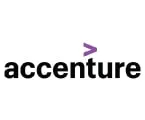

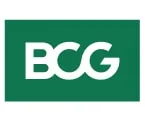
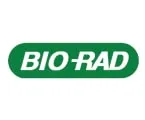
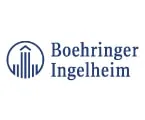

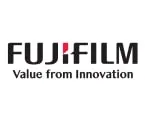
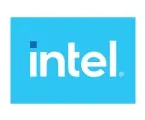
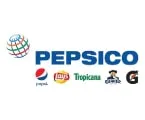
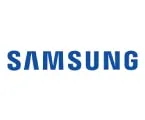


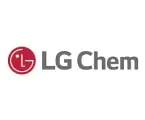
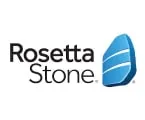
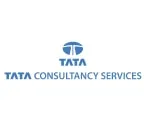
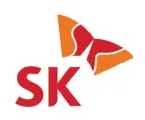
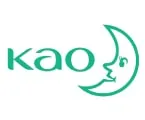

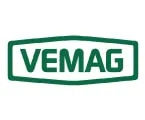
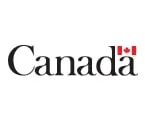

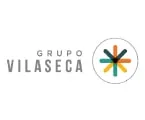


Published Date: May-2024
Please enter your corporate email id here to view sample report.
Subscribe to get the latest industry updates